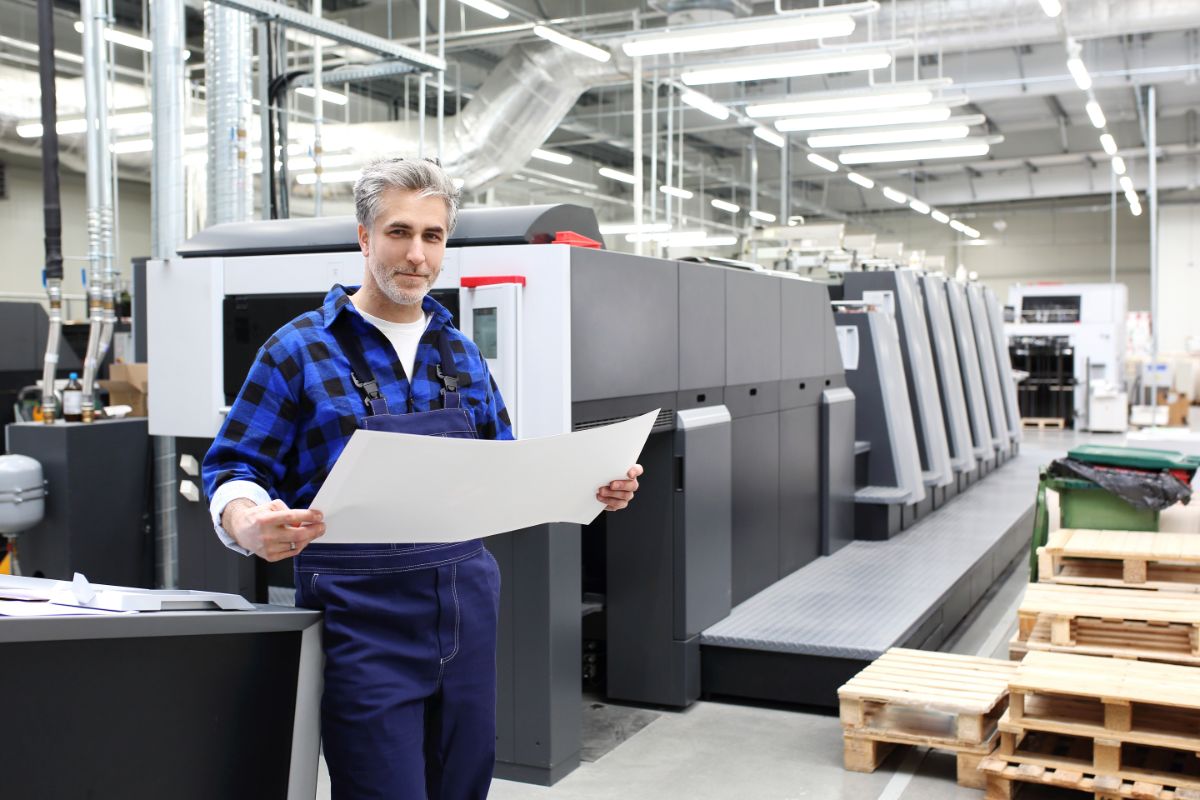The world of printing has undergone tremendous changes over the years, with offset printing playing a pivotal role in this transformation. Understanding the offset printing timeline offers insights into how this technology has evolved to become a cornerstone in the printing industry. As marketing professionals, knowing the history and advancements of offset printing can provide a strategic advantage in making informed decisions about printing needs.

The Beginnings of Offset Printing
Offset printing, a technique where an inked image is transferred from a plate to a rubber blanket and then onto the printing surface, was first developed in the early 20th century. The journey began with Ira Washington Rubel’s discovery in 1903, which marked the start of a new era in the printing process.
1900s: The Invention of Offset Printing
The invention of offset printing is credited to two individuals working independently: Ira Washington Rubel in the United States and Caspar Hermann in Germany. Rubel, a printer in New Jersey, discovered that images accidentally transferred to the rubber blanket of his lithographic press produced a clearer print than the stone plate itself. This led to the development of the first offset printing press.
1910s: Commercial Adoption
By the 1910s, offset printing had gained commercial traction. Printers quickly adopted this new method due to its ability to produce high-quality prints at a faster rate and lower cost. The increased efficiency and quality made it a popular choice for printing newspapers, books, and marketing materials.
Mid 20th Century Advances
The mid-20th century saw significant improvements in offset printing technology, including the introduction of web offset presses, which allowed for continuous rolls of paper to be printed, further increasing speed and efficiency.
1950s: The Rise of Web Offset Printing
Web offset printing emerged as a dominant force in the industry during the 1950s. This innovation allowed for continuous rolls of paper to be printed at high speeds, significantly increasing the output and reducing costs. The ability to print large volumes quickly made it an ideal choice for newspapers and other mass-market publications.
1960s: Color Printing Breakthroughs
The 1960s marked a major breakthrough with the introduction of color offset printing. This advancement opened up new possibilities for marketers, allowing for vibrant and eye-catching promotional materials. The capability to print in color with precision and consistency became a game-changer for advertising and branding.
Modern Developments in Offset Printing
In recent decades, offset printing has continued to evolve, incorporating digital technologies and improving environmental sustainability. These advancements have ensured that offset printing remains relevant in a digital age.
1990s: Digital Integration
With the rise of digital technology in the 1990s, offset printing began to integrate digital prepress processes. This allowed for quicker setup times and more precise control over the printing process. Digital integration has enabled printers to meet the growing demand for short-run and customized print jobs.
2000s: Environmental Innovations
As environmental concerns became more prominent, the offset printing industry responded with innovations to reduce its ecological footprint. Vegetable-based inks and recycled paper became common, and advancements in technology reduced waste and energy consumption.
The Future of Offset Printing
Looking ahead, offset printing continues to adapt to the changing landscape of the printing industry. The integration of artificial intelligence and further advancements in eco-friendly printing materials are expected to drive the next wave of innovation.
Emerging Technologies
The future of offset printing is likely to be shaped by emerging technologies such as artificial intelligence and machine learning. These technologies have the potential to further optimize the printing process, reducing errors and increasing efficiency.
Focus on Sustainability
As sustainability becomes a priority for businesses and consumers alike, the offset printing industry is expected to continue its efforts to minimize environmental impact. This includes the development of new materials and processes that are both cost-effective and eco-friendly.
For more detailed information on how offset printing works, you can explore this in-depth guide.
Conclusion
The offset printing timeline is a testament to the dynamic nature of the printing industry. From its humble beginnings in the early 20th century to its current state as a sophisticated and versatile printing method, offset printing has consistently adapted to meet the needs of a changing world. For marketing professionals, understanding this timeline is crucial in leveraging the strengths of offset printing for successful campaigns.

FAQs
What is offset printing?
Offset printing is a common printing technique where the inked image is transferred from a plate to a rubber blanket, and then onto the printing surface. It is widely used for its high-quality print and cost-effectiveness for large-volume jobs.
Why is offset printing still relevant today?
Offset printing remains relevant due to its ability to produce high-quality prints at a low cost, especially for large-volume jobs. Its adaptability to integrate with digital technologies also ensures it meets modern printing needs.
How does offset printing differ from digital printing?
Offset printing is typically more cost-effective for large runs, whereas digital printing is better suited for short runs and customized prints. Offset printing generally offers a higher quality print with more consistency in color.
For more insights on the advantages of offset printing in various applications, you can explore our offset printing for magazines article.
This article contains affiliate links. We may earn a commission at no extra cost to you.






